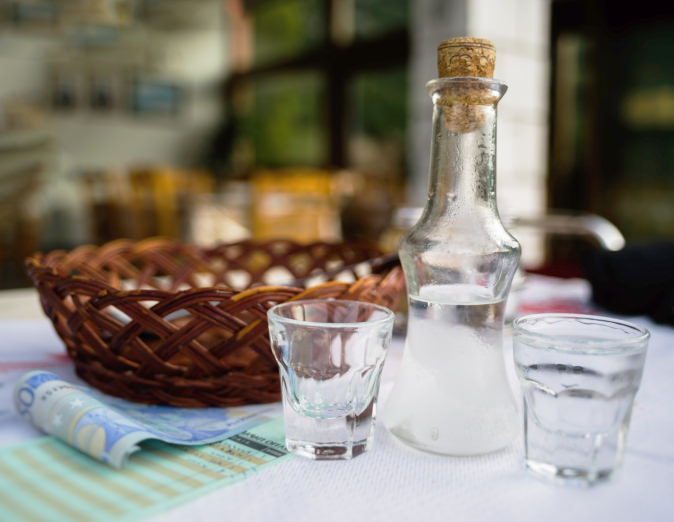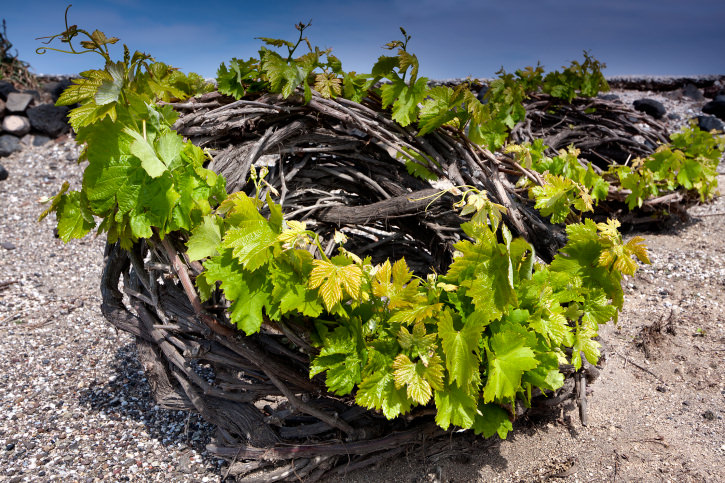What You Need to Know About Greek Raki (Tsikoudia)
Comments Off on What You Need to Know About Greek Raki (Tsikoudia)
 If you’ve ever been to the Greek island of Crete, or if you have ancestors that are from the island, chances are pretty good that you’ve had a spirit called Raki. In other parts of Greece, it’s known as Tsikoudia or Tsipouro. In Italy it’s called Grappa, in Spain it’s referred to as Oruja, and in the country of Georgia it’s called Chacha. To Americans, it’s often considered a form of moonshine, especially when they learn how it’s made.
If you’ve ever been to the Greek island of Crete, or if you have ancestors that are from the island, chances are pretty good that you’ve had a spirit called Raki. In other parts of Greece, it’s known as Tsikoudia or Tsipouro. In Italy it’s called Grappa, in Spain it’s referred to as Oruja, and in the country of Georgia it’s called Chacha. To Americans, it’s often considered a form of moonshine, especially when they learn how it’s made.
Though it isn’t readily available in the United States, Greeks are eager to send travelers home with their homemade Raki. They usually put it in clear water bottles so that it can be easily transported. So, what is Raki exactly and why are Cretans so proud of it?
Raki Comes From Grapes
 Simply put, Raki comes from byproducts created from the wine making process. After the grapes are pressed and the juice is stored so that it can begin fermenting, there’s a lot of leftover plant material. Greeks are resourceful people and they don’t let anything go to waste!
Simply put, Raki comes from byproducts created from the wine making process. After the grapes are pressed and the juice is stored so that it can begin fermenting, there’s a lot of leftover plant material. Greeks are resourceful people and they don’t let anything go to waste!
The resulting skins, twigs, and mash, which is referred to as pomace, is stored for around six weeks before it is distilled into Raki. In fact, as long as the plant material is edible, it can eventually be distilled into Raki. Pictured here is an old fashioned distiller that is still used today to make this alcoholic beverage in many parts of Greece.
History of Raki
Did you know that this spirit dates all the way back to Ancient times? Evidence of it has been found in ancient pottery from the Minoan and Mycenaean civilizations. It seems that they enjoyed a beverage similar to Raki with their meals and was also made from grapes. During the Turkish occupation of Greece, particularly on Crete, the Turks began calling the local spirit Raki because it was similar to their own version of this beverage. However, Turkish Raki is flavored with anise and Greek Raki is has a clear, clean taste. Today, the terms Raki, Tsikoudia, and Tsipouro are used interchangeably.

Tradition of Hospitality
Although I’ve traveled all over Greece, my first exposure to this beverage occurred on the island of Crete. To the Cretans, it represents hospitality. When visiting a local restaurant, for example, they’ll often bring out a small pot of homemade Raki, made in their own distillery. Restaurant owners love to join you while you drink! To express their gratitude for your visit, they may send you home with a plastic bottled filled the clear liquid. They goal is for you to share it with your friends and family when at home so that you can always remember the island.
Raki with Honey – A Recipe
If you don’t like the taste of pure Raki, you can always drink Rakomelo, which is traditional Raki that has been mixed with honey. Though distillers often mix the honey into the Raki before bottling, you can also make it yourself with plain Raki. All you need to do is mix two cups of raki with three tablespoons honey in a saucepan and gently heat until the honey is melted. You can either serve it hot or chill it in the refrigerator before serving.
Do you want to use Raki in cocktails? You should, it can make a great addition to any mixed drink. Although our cocktail recipes don’t include any that have Raki (Tsikoudia), feel free to make substitutions. If you substitute Raki for Ouzo, though, remember that this will change the flavor of the drink. But the cocktail will still taste great!
Categorized in: Greek Cooking
This post was written by Greek Boston
Share this Greek Cooking Article:





